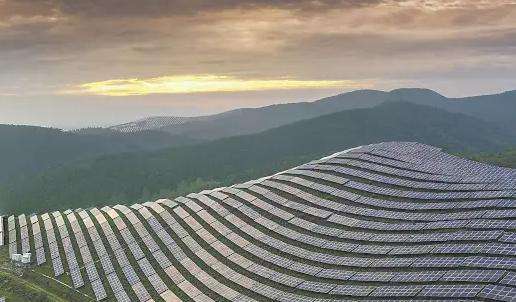Offshore wind power generally consists of a certain number of wind turbines and transmission systems.
The principle of wind power generation: wind power is used to drive the windmill blades to rotate, and then the speed increaser is used to increase the rotation speed to prompt the generator to generate electricity. According to windmill technology, power generation can start at a speed of about three meters per second (the level of light wind). Wind power requires no fuel and produces no radiation or air pollution. The equipment required for wind power generation is called a wind turbine. This kind of wind turbine can be roughly divided into three parts: wind wheel, generator and tower.
Converting the kinetic energy of the wind into mechanical kinetic energy, and then converting the mechanical energy into electrical kinetic energy, this is wind power generation. The principle of wind power generation is to use wind power to drive the windmill blades to rotate, and then use a speed increaser to increase the speed of rotation to prompt the generator to generate electricity. According to current windmill technology, power generation can begin at a breeze speed of approximately three meters per second (the degree of breeze). Wind power is becoming a craze around the world because it does not require the use of fuel and does not produce radiation or air pollution. The equipment required for wind power generation is called a wind turbine. This kind of wind turbine can be roughly divided into three parts: wind wheel (including tail rudder), generator and iron tower. (Large wind power stations basically do not have tail rudders. Generally, only small ones (including household ones) have tail rudders.) The wind wheel is an important component that converts the kinetic energy of the wind into mechanical energy. It consists of two (or more) propellers. Shaped impeller. When the wind blows towards the blades, aerodynamic force is generated on the blades to drive the wind wheel to rotate. The blade material requires high strength and light weight. Currently, it is mostly made of fiberglass or other composite materials (such as carbon fiber). (There are also some vertical wind wheels, S-shaped rotating blades, etc., which have the same function as conventional propeller-type blades.) Since the speed of the wind wheel is relatively low, and the magnitude and direction of the wind force often change, this in turn makes the speed unstable; Therefore, before driving the generator, a gearbox must be attached to increase the speed to the rated speed of the generator, and a speed regulating mechanism must be added to keep the speed stable, and then connected to the generator. In order to keep the wind rotor always aligned with the wind direction to obtain maximum power, a tail rudder similar to a wind vane needs to be installed behind the wind rotor. The iron tower is the structure that supports the wind wheel, rudder and generator. It is generally built relatively high in order to obtain larger and more uniform wind force and to have sufficient strength. The height of the tower depends on the impact of ground obstacles on wind speed and the diameter of the wind wheel. It is generally in the range of 6-20 meters. The function of the generator is to transfer the constant rotation speed obtained from the wind wheel to the power generation mechanism through increased speed for even operation, thereby converting mechanical energy into electrical energy.














